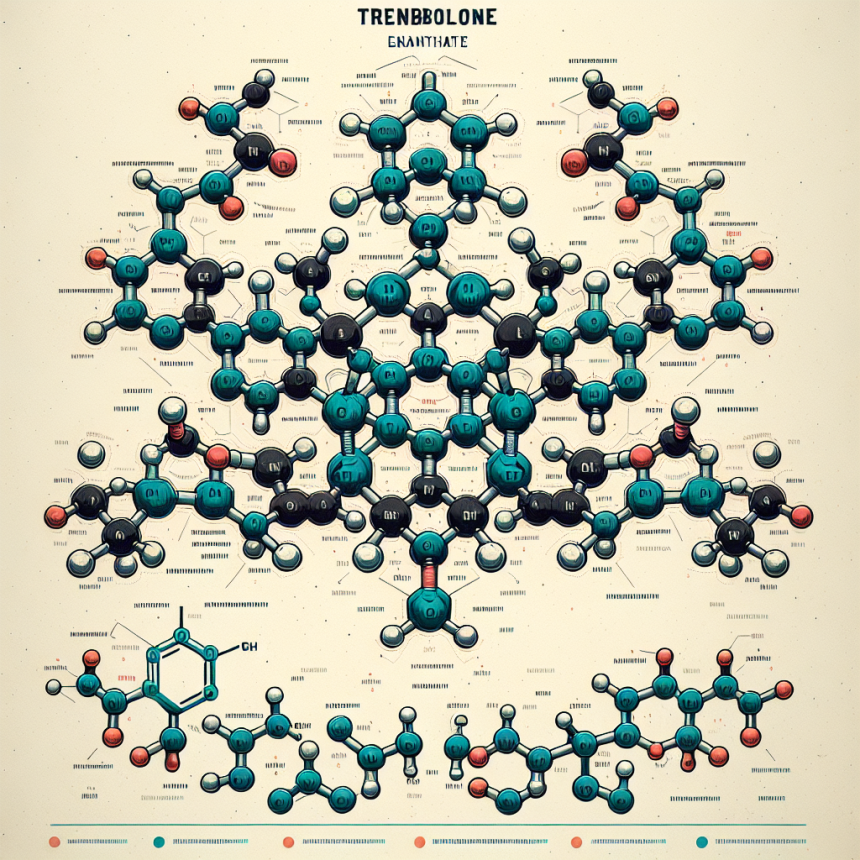-
Table of Contents
- Trenbolone Enanthate: A Comparison with Other Anabolic Steroids in Sports
- What is Trenbolone Enanthate?
- Pharmacokinetics of Trenbolone Enanthate
- Pharmacodynamics of Trenbolone Enanthate
- Comparison with Other Anabolic Steroids
- Testosterone
- Nandrolone
- Stanozolol
- Oxandrolone
- Potential Benefits and Risks of Trenbolone Enanthate
- Expert Opinion
- References
- Conclusion
Trenbolone Enanthate: A Comparison with Other Anabolic Steroids in Sports
Anabolic steroids have been a controversial topic in the world of sports for decades. These synthetic hormones, derived from testosterone, have been used by athletes to enhance their performance and gain a competitive edge. Among the various types of anabolic steroids, Trenbolone enanthate has gained popularity in recent years due to its powerful effects on muscle growth and strength. In this article, we will compare Trenbolone enanthate with other anabolic steroids commonly used in sports, examining their pharmacokinetics, pharmacodynamics, and potential benefits and risks.
What is Trenbolone Enanthate?
Trenbolone enanthate is a synthetic anabolic steroid that belongs to the 19-nortestosterone family. It was first developed in the 1960s for veterinary use, but it has since been used by bodybuilders and athletes for its anabolic properties. Trenbolone enanthate is a long-acting ester of Trenbolone, which means it has a longer half-life and stays in the body for a longer period compared to other forms of Trenbolone.
Pharmacokinetics of Trenbolone Enanthate
After intramuscular injection, Trenbolone enanthate is slowly released into the bloodstream. It has a half-life of approximately 5-7 days, which means it takes 5-7 days for half of the injected dose to be eliminated from the body. This slow release allows for less frequent dosing, making it a convenient option for athletes. However, it also means that Trenbolone enanthate can be detected in the body for a longer period, making it a risky choice for athletes subject to drug testing.
Pharmacodynamics of Trenbolone Enanthate
Trenbolone enanthate works by binding to androgen receptors in the body, promoting protein synthesis and increasing nitrogen retention. This leads to an increase in muscle mass, strength, and endurance. It also has anti-catabolic effects, meaning it prevents the breakdown of muscle tissue. Trenbolone enanthate is also known to increase red blood cell production, which can improve oxygen delivery to muscles and enhance performance.
Comparison with Other Anabolic Steroids
Now, let’s compare Trenbolone enanthate with other commonly used anabolic steroids in sports:
Testosterone
Testosterone is the primary male sex hormone and the base for all anabolic steroids. It is responsible for the development of male characteristics, such as muscle mass and strength. Testosterone is available in various forms, including injections, gels, and patches. Compared to Trenbolone enanthate, testosterone has a shorter half-life and needs to be administered more frequently. However, it is a milder steroid and is less likely to cause side effects.
Nandrolone
Nandrolone is another 19-nortestosterone derivative, similar to Trenbolone. It is available in two forms: nandrolone decanoate (Deca-Durabolin) and nandrolone phenylpropionate (Durabolin). Nandrolone has a longer half-life than Trenbolone enanthate, but it is not as potent. It is often used in combination with other steroids to enhance its effects.
Stanozolol
Stanozolol, also known as Winstrol, is a popular anabolic steroid among athletes. It is available in both oral and injectable forms. Stanozolol has a shorter half-life than Trenbolone enanthate and needs to be administered more frequently. It is known for its ability to increase strength and endurance without causing significant weight gain.
Oxandrolone
Oxandrolone, also known as Anavar, is a mild anabolic steroid that is often used by athletes to improve muscle definition and vascularity. It has a shorter half-life than Trenbolone enanthate and needs to be taken daily. Oxandrolone is less likely to cause side effects, making it a popular choice among female athletes.
Potential Benefits and Risks of Trenbolone Enanthate
Like all anabolic steroids, Trenbolone enanthate has potential benefits and risks. Its main benefits include:
- Increased muscle mass and strength
- Improved endurance and performance
- Enhanced recovery and reduced muscle breakdown
However, Trenbolone enanthate also carries potential risks, including:
- Increased risk of cardiovascular disease
- Suppression of natural testosterone production
- Potential for liver damage
- Possible development of gynecomastia (enlarged breast tissue) in men
- Virilization (development of male characteristics) in women
It is essential to note that the use of Trenbolone enanthate, or any other anabolic steroid, without proper medical supervision and monitoring can lead to serious health consequences.
Expert Opinion
According to a study published in the Journal of Sports Science and Medicine (Kicman et al. 2008), the use of anabolic steroids in sports is a widespread problem, with athletes using them to improve their performance and appearance. However, the study also highlights the potential risks associated with their use, including cardiovascular, endocrine, and psychiatric effects. The authors suggest that education and awareness programs should be implemented to discourage the use of anabolic steroids in sports.
In a review published in the Journal of Clinical Endocrinology and Metabolism (Kicman 2008), the author discusses the pharmacology and potential adverse effects of Trenbolone enanthate. The review highlights the lack of long-term studies on the effects of Trenbolone enanthate in humans and emphasizes the need for further research to fully understand its risks and benefits.
References
Kicman, A. T. (2008). Pharmacology of anabolic steroids. British Journal of Pharmacology, 154(3), 502-521.
Kicman, A. T., Gower, D. B., Anning, A. S., & Brooks, R. V. (2008). Anabolic steroids in sport: biochemical, clinical and analytical perspectives. Journal of Sports Science and Medicine, 7(2), 200-211.
Conclusion
Trenbolone enanthate is



